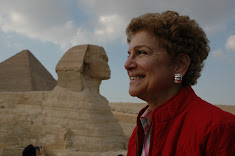
Or, buy my book. Shameless self-promotion here.
Environmentally friendly destinations and fuel efficient cars. Eco tips and tools for smarter travel.






 March 22 is World Water Day -- a good time to think about the environmental cost of bottled water.
March 22 is World Water Day -- a good time to think about the environmental cost of bottled water.  Visit the childhood home of Sir Paul McCartney, which Heather Mills did not get in their well-publicized divorce settlement.
Visit the childhood home of Sir Paul McCartney, which Heather Mills did not get in their well-publicized divorce settlement.Hop aboard a yellow minibus, not a yellow submarine, to visit the childhood homes of Sir Paul McCarthy and John Lennon, now both National Trust heritage properties.
There's also a hop-on-hop-off double decker bus, which makes multiple stops, including at The Cavern Club on Matthew Street, where the Beatles were just one of more than one thousand musicians and groups to have played here. There still is live music here five nights a week, and outside, a “Wall of Fame” lists some of these golden oldies, from Richie Havens to Acker Bilk, the Yardbirds and the Rolling Stones. The Cavern Club is just around the corner from the new Beatles-themed Hard Day's Night Hotel.
Take the ferry for a one-hour loop of both sides of the Mersey River, immortalized by the Beatles song Ferry Across the Mersey, which plays over the loudspeaker when the ferry leaves the dock, which is in front of the baroque Cunard Building. Liverpool may be most famous these days for its Beatles connection, but the city has a strong maritime history, too.
And if you want yet more of The Beatles Story, there's a museum of the same name in the Albert Dock area of museums and shops. It traces the influence of Elvis Presley, Chuck Berry and other 1950s rock and blues stars on the young Liverpudlians who would create what became known as ‘the Mersey sound” in the 60s.
It’s pure nostalgia for those old enough to remember the raucous early days. And, it's bittersweet for anyone viewing the white piano decorated with a single red rose and a framed photo of John Lennon, while the loudspeaker plays Imagine, softly. The self-guided audio tour is in nearly one dozen languages; Lennon’s sister narrates the English version.
It's enough to turn you into a Beatles groupie, if you weren't one already.
 Thanks to well-timed rains, the desert of Southern Arizona will have its best wildflower season in years this spring. And, the wildflowers are being joined by a similar riot of colors of cactus flowers.
Thanks to well-timed rains, the desert of Southern Arizona will have its best wildflower season in years this spring. And, the wildflowers are being joined by a similar riot of colors of cactus flowers. 








